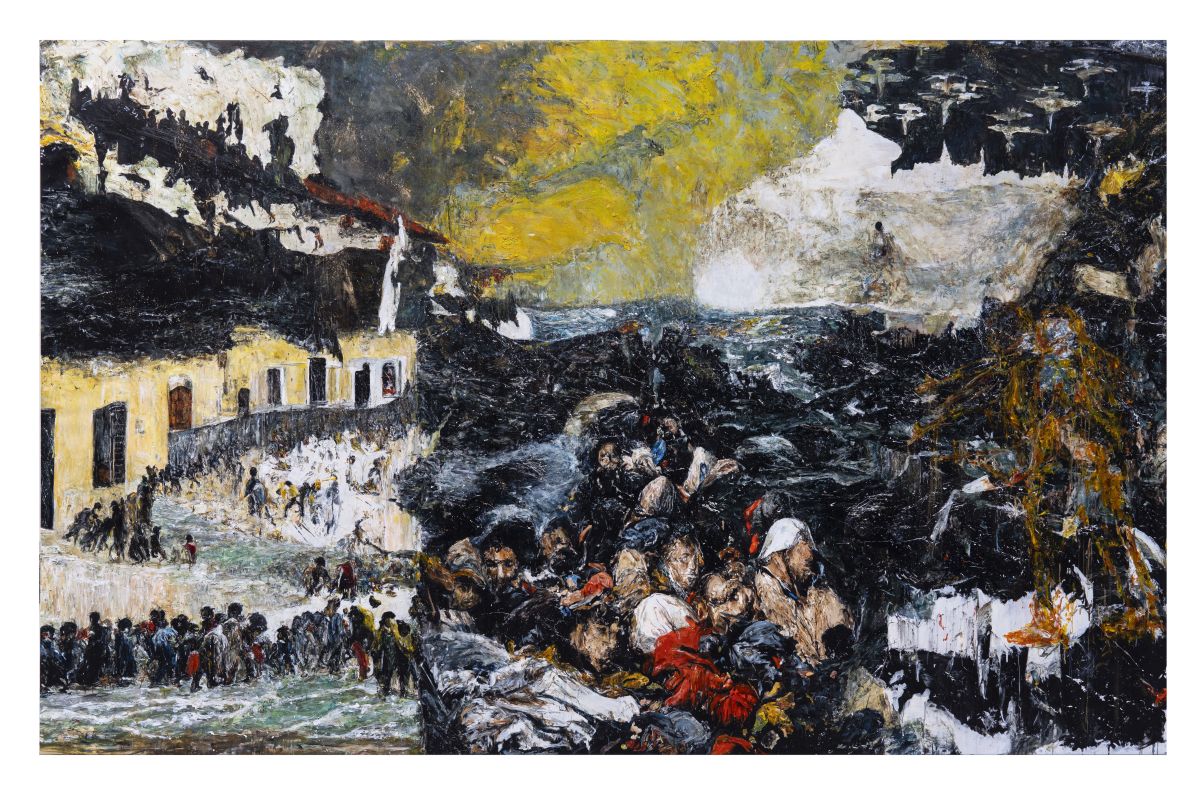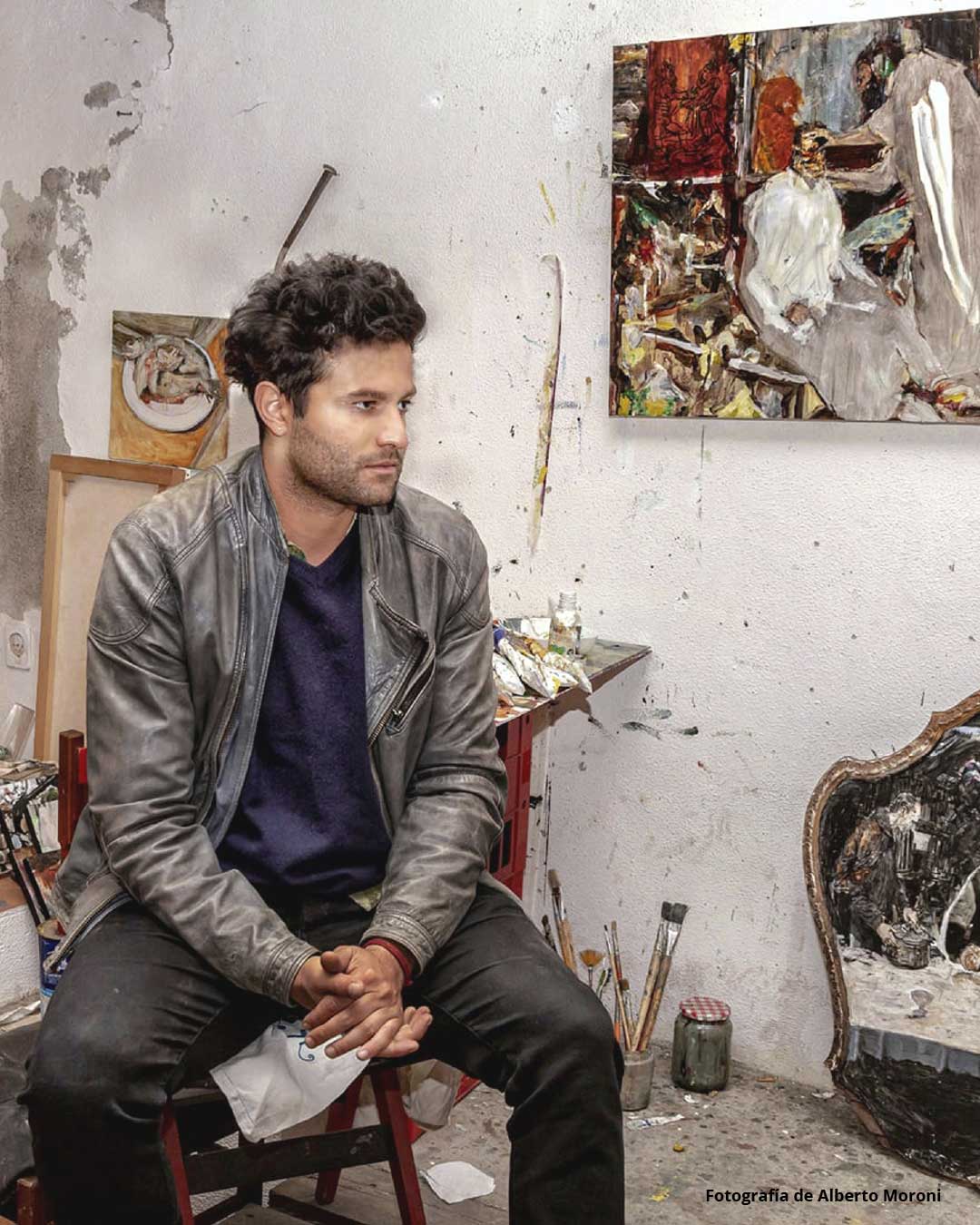Works
Visione fantastica (2024)
This work by Arvin Golrokh draws inspiration from a painting of the same name by Francisco de Goya made in 1823. Instead of a literal reinterpretation, he uses the image as a starting point to talk about a highly topical subject: forced journeys out of necessity, migrations and everything that is at stake in those travels. In this work, Golrokh condenses into a single scene three moments of the contemporary migratory journey: departure, transit and arrival. Each of them is marked by new obstacles, which are connected to each other without providing shelter. The figures depicted, disoriented and vulnerable, cross hostile landscapes in search of a better life, but what they find in the end is a new form of racial, social and political exclusion. Three key elements - nature, space and the body - coexist in the painting, thus revealing the tensions of a world governed by fear, poverty and control. In the background, like vigilant shadows, armed figures appear, guarding the place of arrival and speaking of the need for submission. In Golrokh's hands, painting is no longer a mere testimony and becomes a form of resistance, a way of looking at the world from a complex perspective. He does not offer an optimistic vision, but a clear picture of how certain power structures work today. His painting does not seek to please, but to make people think.



